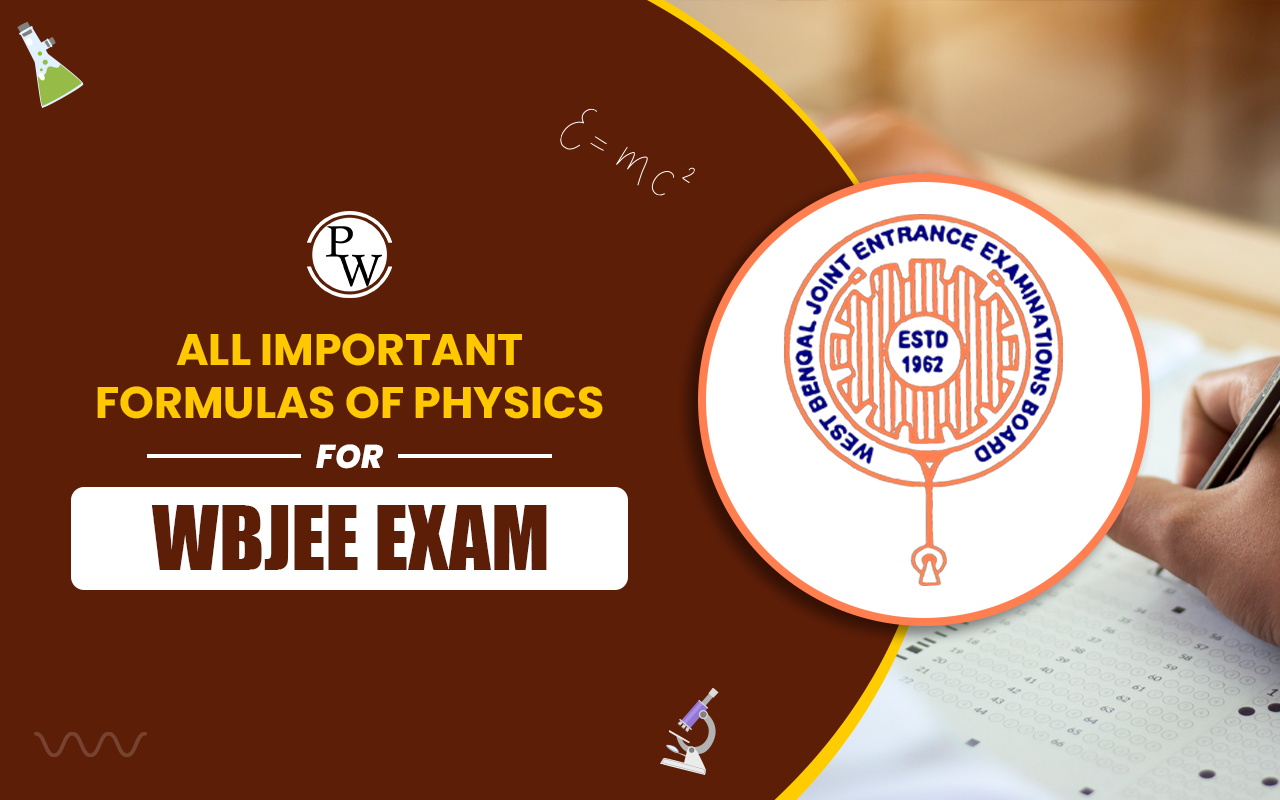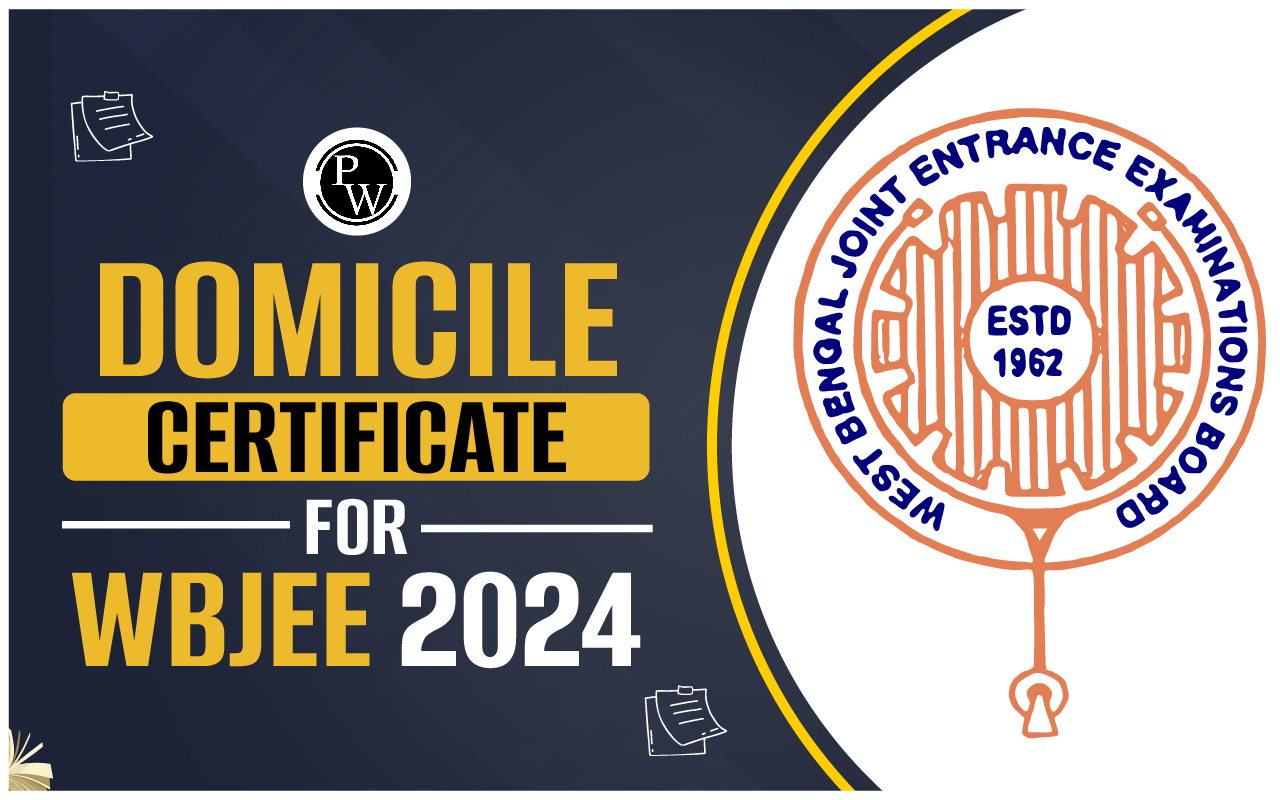

All Important Formulas of Physics for WBJEE Exam: Are you preparing for the WBJEE Exam and looking for a reliable way to organize your Physics revision? Having a well-structured list of all essential Physics formulas can be a game-changer for covering the WBJEE Exam Physics syllabus 2025 effectively.
Physics in WBJEE spans important areas such as Mechanics, Thermodynamics, Electricity and Magnetism, Optics, and Modern Physics, each of which requires quick recall of formulas to tackle the diverse question types in the syllabus. A comprehensive formula sheet provides students with a ready reference, reducing time spent searching through textbooks and improving problem-solving accuracy. With formulas organized by topic, students can focus on understanding applications rather than recalling them under exam pressure. Below, we provide all important formulas for Physics, helping students streamline their WBJEE Exam syllabus preparation and build confidence for exam day.All Important Formulas of Physics for WBJEE Exam
Get all the important Physics formulas for the WBJEE Exam to help with quick and easy revision. This list covers key topics like Mechanics, Thermodynamics, and Optics. Details are given below.| All Important Formulas of Physics for the WBJEE Exam | ||
|---|---|---|
| Topic | Formula | Description |
| Mechanics | ||
| Newton’s Second Law | F = ma | Force equals mass times acceleration. |
| Gravitational Force | F = G * m1 * m2 / r^2 | The force between two masses separated by distance r. |
| Kinetic Energy | KE = 1/2 * mv^2 | The energy of a moving object. |
| Potential Energy | PE = mgh | Energy is stored in an object due to height. |
| Momentum | p = mv | Product of mass and velocity. |
| Thermodynamics | ||
| First Law of Thermodynamics | ΔQ = ΔU + ΔW | Energy conservation in thermodynamic processes. |
| Heat Transfer (Conduction) | Q = kA * ΔT / d | Rate of heat transfer through a material. |
| Ideal Gas Law | PV = nRT | Relation between pressure, volume, and temperature. |
| Waves and Oscillations | ||
| Wave Speed | v = f * λ | Wave speed as product of frequency and wavelength. |
| Simple Harmonic Motion | T = 2π * √(m / k) | Period of a mass-spring system. |
| Frequency of Pendulum | T = 2π * √(l / g) | Period of a simple pendulum with length l. |
| Optics | ||
| Lens Formula | 1 / f = 1 / v - 1 / u | Relation for lenses. |
| Mirror Formula | 1 / f = 1 / v + 1 / u | Relation for mirrors. |
| Magnification | m = h' / h = v / u | The ratio of image height to object height. |
| Electricity and Magnetism | ||
| Ohm’s Law | V = IR | Voltage equals current times resistance. |
| Coulomb’s Law | F = k * q1 * q2 / r^2 | The force between two charges. |
| Electric Field | E = F / q | The electric field is force per unit charge. |
| Capacitance | C = Q / V | Capacitance is a charge per unit voltage. |
| Magnetic Force | F = qvB * sin θ | Force on a charge moving in a magnetic field. |
| Modern Physics | ||
| Photoelectric Equation | Ek = hf - φ | The energy of ejected electrons in the photoelectric effect. |
| Einstein’s Mass-Energy Relation | E = mc^2 | Relation between mass and energy. |
| De Broglie Wavelength | λ = h / p | The wavelength associated with a particle of momentum p. |
| Electromagnetic Waves | ||
| Speed of Light | c = λ * f | Speed of electromagnetic waves. |
| Energy of a Photon | E = hf | Energy of a photon in terms of Planck’s constant and frequency. |
All Important Formulas of Physics for WBJEE Exam PDF
For students preparing for the WBJEE Exam, having a complete list of Physics formulas is essential. This PDF covers key formulas across Mechanics, Thermodynamics, Optics, Electricity, and more, making it easier for students to revise and apply concepts efficiently. Access the All Important Formulas of Physics for WBJEE Exam PDF below for streamlined preparation and quick reference.All Important Formulas of Physics for WBJEE Exam PDF
Tips to Solve Numerical using All Important Formulas of Physics for WBJEE Exam
Here are some practical tips to solve numerical effectively using All Important Formulas of Physics for WBJEE Exam :Analyze the Question Thoroughly - Take a few seconds to fully understand the question. Identify what’s being asked, which physical quantities are given, and the exact formula that applies. Carefully noting units and variables can prevent missteps.
Write Down All Relevant Formulas - List any formulas that could apply to the question. This process not only clarifies your approach but also reinforces memory, making it easier to recall formulas in the future. It’s also helpful to break complex problems down by writing intermediary formulas.
Use Dimensional Analysis for Formula Verification - When in doubt, verify formulas by checking the dimensions on both sides. This is a powerful tool for understanding and confirming that a formula is appropriate for the problem at hand, especially in topics like Thermodynamics and Mechanics.
Substitute Values Systematically - Avoid skipping steps when substituting values into formulas. Write each step out clearly, particularly when dealing with multiple conversions. This habit minimizes mistakes and makes it easier to identify any errors if the answer doesn’t seem right.
Practice Common Formula-Based Shortcuts - Familiarize yourself with common shortcuts for frequently tested topics, such as gravitational force, work-energy relations, and circuit calculations. Recognizing these shortcuts can save time and help you solve numerical efficiently in high-pressure exam conditions.
Double-Check Units in the Final Answer - Before moving to the next question, ensure that your final answer’s units match the expected result. Converting units at the end, if necessary, is a critical step to confirm accuracy, especially for multi-step problems involving various measurement units.
All Important Formulas of Physics for WBJEE Exam FAQs
What are the 20 formulas in physics?
What are the 15 formulas in physics?
What is the importance of the physics formula in WBJEE Exam?
How can I memorize physics formulas easily?












